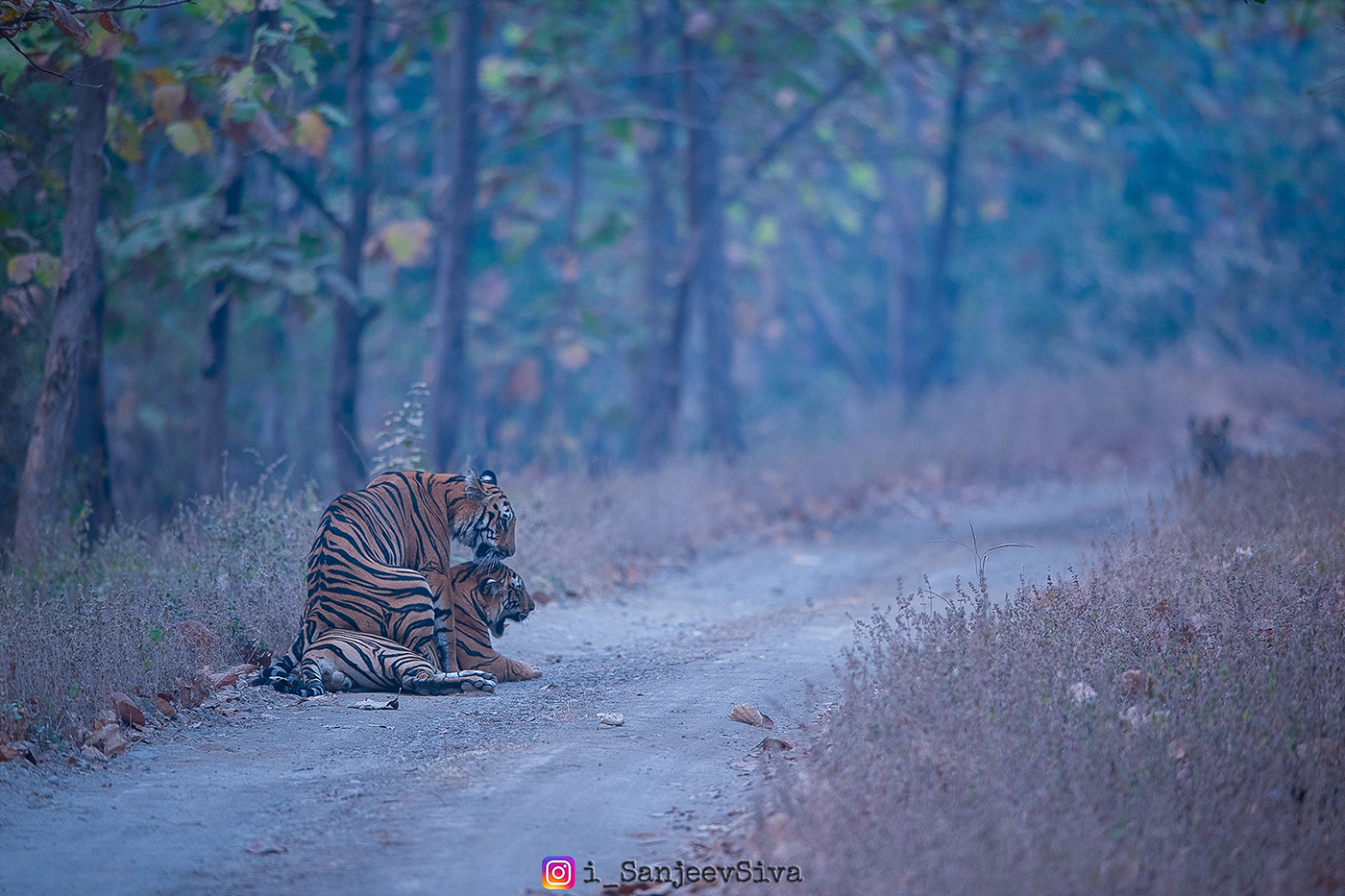The Gay Tigers
Homosexuality has been and still a taboo even amongst human beings that it is a rarely researched topic, specifically in animals. It is hypothesized to be more common in primates and aquatic animals. For non-sexual purposes, animals might still indulge in acts (that appear like homosexuality) such as male-male mounting and humping, to assert dominance, indulge in sexual play for practice, a serious squabble or treat such an act as a release for sexual tension or aggression or a show of affection or social grooming.
Does such behaviour exist amongst tigers?
The very solitary and territorial nature of tigers usually suggests that such a behaviour is unheard of; the rationale is that tigers become independent by the age of 2 years and they do not sexually mature till an age of 3 years for females and 4 years for males and also that males tend to disperse, away from birth areas (generally).
Homosexuality is unprecedented, in tiger kingdom. However, there are a few observed instances of tigers mounting the other for non-sexual purposes (or that is what we believe, currently).
Female cubs tend to remain independent (and stay away from the mother) since quite a young age while the male cubs remain with the mother (till the mother or father push them away). Female cubs tend to dominate one another by picking squabbles, growling, ambushing, threatening etc. Male cubs on the other hand seem to have a stronger bond and indulge in a sort of bromance.

Litters that exclusively have male cubs seem to indulge in lesser squabbles after they establish a hierarchy of dominance amongst themselves. The cubs are more tolerant of one another and have a strong sense of brotherhood, protecting one another. On the contrary, litters that exclusively have female cubs often indulge in squabbles (even when they are young enough and dependent on the mother).
It seems that the mounting behaviour is exclusive to males, may be something defined by evolution – males need to mount the female to perform coitus, while females never would need to mount a male. Even as a cub, a male tiger at times mounts his mother playfully as a show of affection.
Why do females fight it out while males indulge in plain display of mounting or humping to establish the dominance? Why do females seek out a territory at a young age, probably by exiling the mother or by snatching a part of hers’? Why do males move out of territory?
By the time tigers become independent, the female cubs grow to about the size of an adult tigress, while even the most well-fed male cubs remain atleast many kilograms less of the father’s heft. Male cubs cannot challenge father unlike the female counterparts. Male cubs seem to respect the father’s size (an apparent indicative of strength). On multiple instances, even two subadult cubs were never observed challenging the father. On the contrary, they roll or duck in front of the father with their fore-paws held cocked, splayed legs, vulnerable parts such as throat, chest and abdomen exposed – an act of passive submission.
In many herd and pack animals such as elephants or lions, mounting has a bonding significance in the long run. Specifically, in big cats, coalition lions are known to mount one another, even as adults, to maintain social bond or for dominance hierarchy, which eases stress and aggression and benefits the coalition in the longer run. But what significance does this have in a tiger that is solitary and does not form coalitions?
The only reason why tigers mount seems to establish dominance which is short-lived as these tigers go in separate ways after a few months. Another plausible explanation could be that the cubs learn everything by seeing their mother or father – marking a territory, clawing, hunting etc. Since male cubs tend to stay a little more than female cubs and probably witness the mating ritual of the mother and the father (as they prepare for the next litter) might try to emulate the same with the other sibling.
Like most cat behaviours, sexuality is also a very less understood concept and nature always works in mysterious ways, undecipherable to man.
Note : Younger tigers mounting their siblings or mothers is generally a playful act. With age, tigers feel more and more independent and territorial. While females might express their independence by fighting off the other siblings, males express their dominance by mounting or humping. This is not to be confused with younger cubs mounting one another.
Photographed is an exceedingly rare moment of two young male sub-adults - Jack & Johnny with Star male on a early winter morning at Tipeshwar WLS in 2018, one mounting the other, obscurely watched by their father from a distance (in the other end of the frame). The third sub-adult was already missing from the scene (became independent); the cubs were already separated from the mother a month or two ago. Hardly after a few days, these two sub-adults too went their own ways (to establish the territory).
This article is about a very short span of time in the life of male siblings when they express dominance over the other, while still maintaining the sibling-bonding; and this act probably will never have any significance in the later stage of the tiger's life - when the same siblings cross paths after years, they might end up fighting one another.
